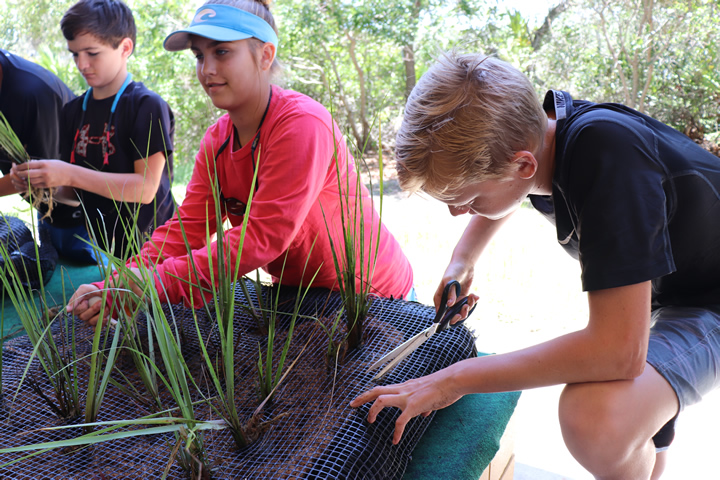Spreading the Seeds of Estuary Health
Spreading the Seeds of Estuary Health
Spreading the Seeds of Estuary Health
Program: NERRS Science Collaborative
Program details » | All NERRS Science Collaborative projects »

Why this work?
Salt marshes and tidal creeks maintain healthy water, protect coastal communities from flooding and erosion, provide nursery and essential habitat for commercial and recreational fisheries, and support recreational activities that are a part of the coastal lifestyle. This project seeks to educate K-12 students on the importance of restoring these ecosystems, using approaches that also meet current science curriculum standards.
About the project
The Guana Tolomato Matanzas, ACE Basin, North Inlet, North Carolina, and Sapelo Island reserves will create a region-wide student-driven program for teachers that will further the understanding of restoring degraded or lost estuary habitats. This project will build upon the successes of previous efforts to teach the importance of the salt marsh habitat through cultivating and transplanting smooth cordgrass, Spartina alterniflora, the dominant plant in this region’s salt marshes. The project team will transfer information on successful growing techniques for smooth cordgrass among the southeast region reserves. Using existing data on smooth cordgrass cultivation and experiences from past and current efforts, reserve staff, in partnership with the Sea Grant Consortium, will create an online, interactive resource center with a topic-based elementary targeted curriculum. Teachers will be trained to use these products through four professional development opportunities, one in each of the southeastern states. Ultimately, this will increase the community of practice among participating schools and teachers, increase the use of standards-based curriculum, increase plant growth success, and increase the project’s overall long-term success.
Project lead and contact
Kenneth Rainer, Guana Tolomato Matanzas National Estuarine Research Reserve, Email: [email protected]
To learn more, view the project factsheet (PDF).